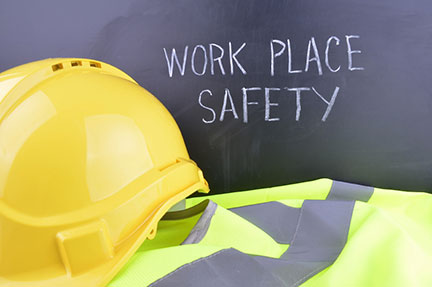New H&S Legislation
by

The Facts
Name: Health and Safety Work Act 2015
Came into effect: April 4th 2016
The Stats
- Between 2010 and 2015 there has been an average of 52 workplace deaths annually*
- In 2014, 226,100 workplace injury claims were made to ACC
- 28,100 of these claims were considered serious**
- In 2010 there was between 600 and 900 deaths related to workplace diseases***
- The goal is to reduce the number of serious work related injuries and deaths in NZ by at least 25% by 2020
Breaking it down
The Health and Safety Work Act 2015 (HSWA) focuses on the need to identify the health and safety risks within the workplace and implement behaviours, practices, systems, processes and training to eliminate these risks. When elimination is not practical, the same steps must be taken to minimise them. Everybody in the business must take responsibility for their health and safety and that of those around them. The HSWA promotes worker engagement and participation. HSWA also encourages the enforcement of health and safety practices that are reasonable for the size and type of business. There is no one size fits all solution when it comes to health and safety and it is important that businesses recognise where they fit on the scale and ensure the implemented practices fit with the businesses needs.
Who is responsible?
Everybody is responsible, a Person Conducting a Business or Undertaking (PCBU) and the business as a whole. Company partners and directors, called officers, also have a large responsibility. Officers must carry out due diligence to ensure their business or undertaking is managing its key health and safety risks effectively. Workers are also responsible for the safety of themselves and their workmates.
What do you need to do?
Your business needs to identify and manage its health and safety risks and ensure that information about health and safety is commonplace.
- Make sure health and safety in your business is led from the top, has involved and is understood by your staff, and is reviewed regularly
- Hold regular training on health and safety matters
- Engage workers in health and safety matters that affect them
- Support all officers to get up to date with health and safety issues and key risk factors
- Report and monitor health and safety goals
- Regularly review any incidents
- Carry out frequent health and safety audits
What practical steps can you take?
Ensure the health and safety of workers and other people are not put at risk by its work. Some practical steps that a PCBU can undertake to ensure this include:
- Providing and maintaining a work environment that is without risks to health and safety
- Providing and maintaining safe plant and structures
- Providing and maintaining safe systems of work
- Ensuring the safe use, handling and storage of plant, structures and substances
- Providing adequate facilities for the welfare at work of workers in carrying out work for the business or undertaking, including ensuring access to those facilities
- Providing any information, training, instruction, or supervision that is necessary to protect all people from risks to their health and safety arising from work carried out as part of the conduct of the business or undertaking
- Monitoring the health of workers and the conditions at the workplace for the purpose of preventing injury or illness of workers arising from the conduct of the business or undertaking
Where to from here
There is no one box that a business must fit into to meet the requirements of the HSWA. It is important that company officers take all steps reasonably practicable to keep their employees and others who visit their workplace safe and healthy. NZProvide can offer advice and help as well as organising external contractors to analyse your businesses health and safety and assist in implementing the correct systems and processes to meet the requirements of the HSWA. NZProvide can also assist with the ongoing monitoring of the work environment and worker’s health to ensure that these risks continue to be managed.
Contact us to find out more about how we can help.